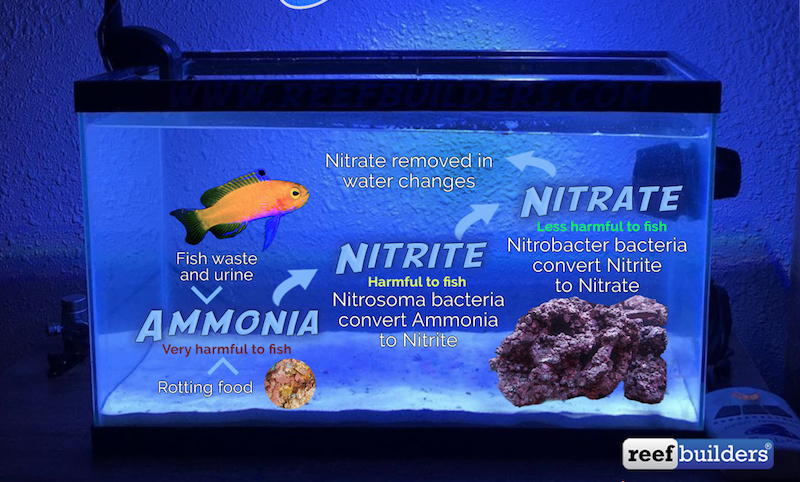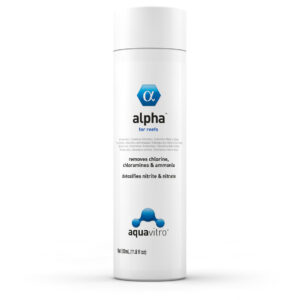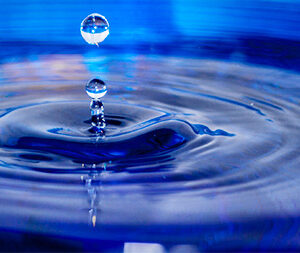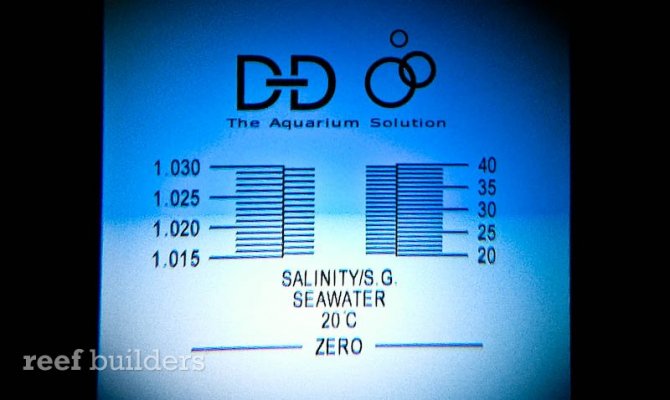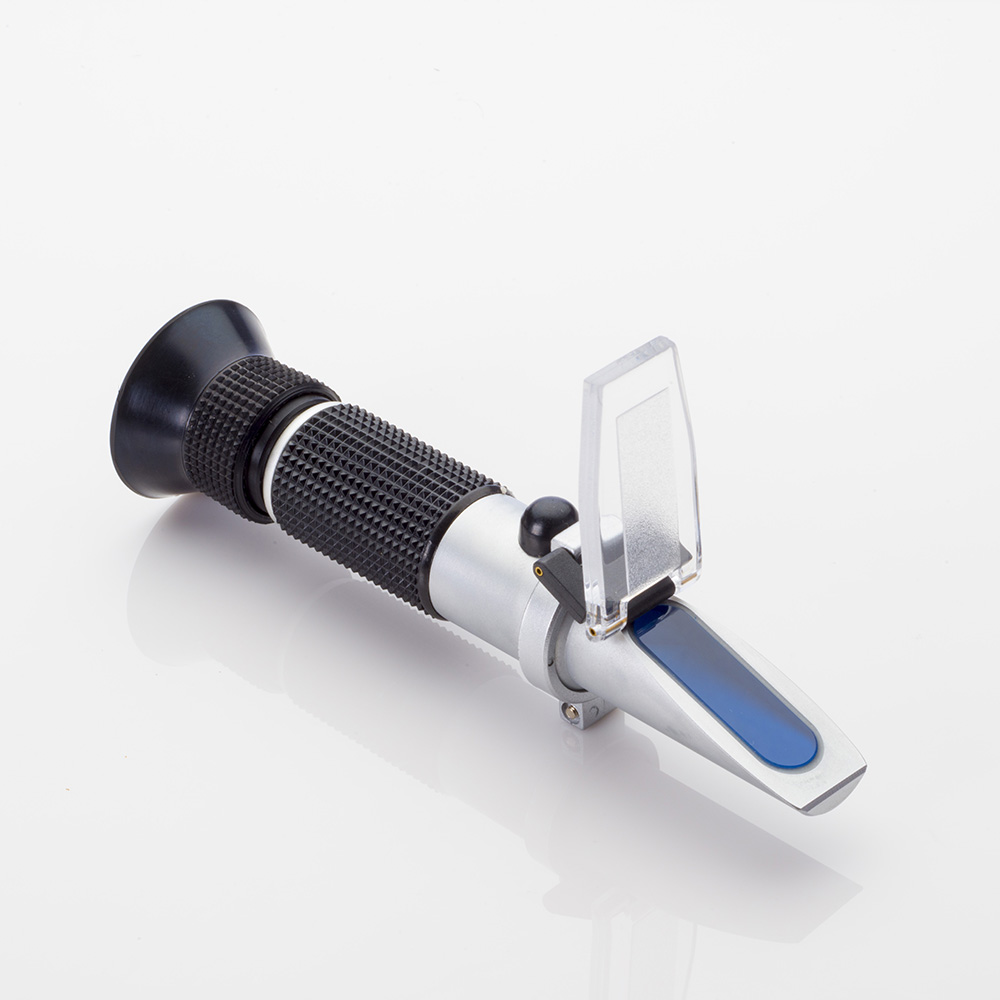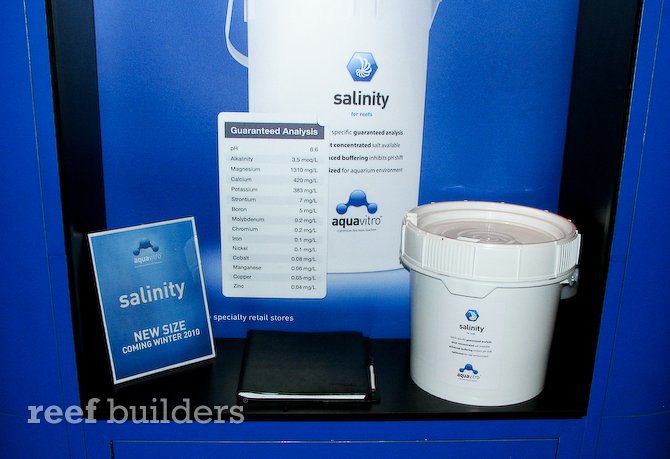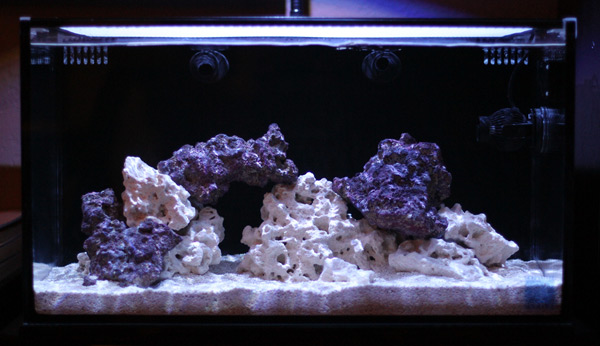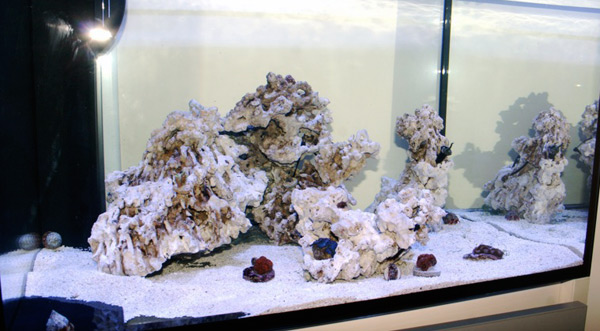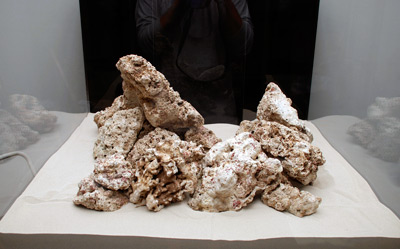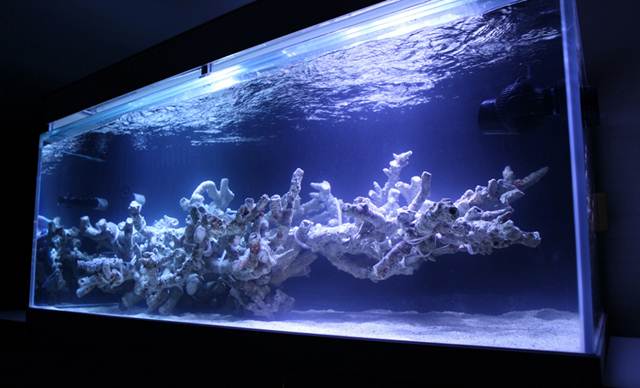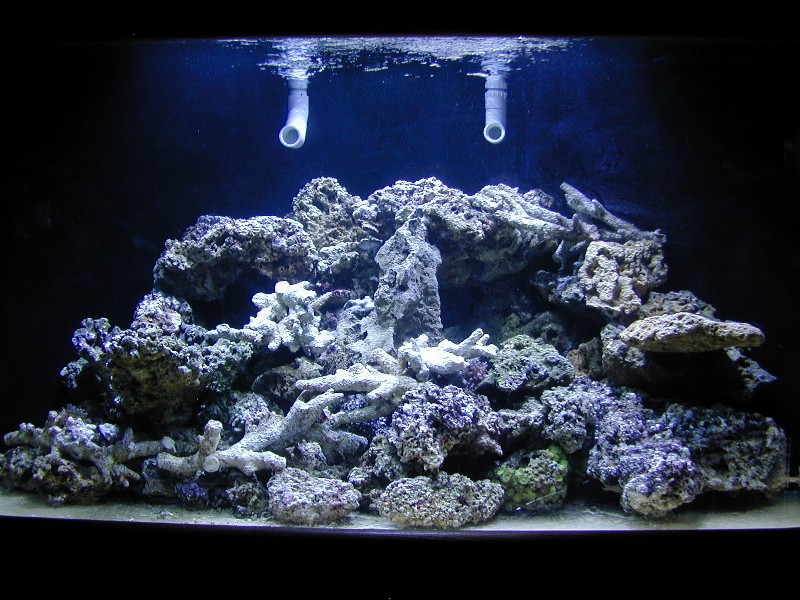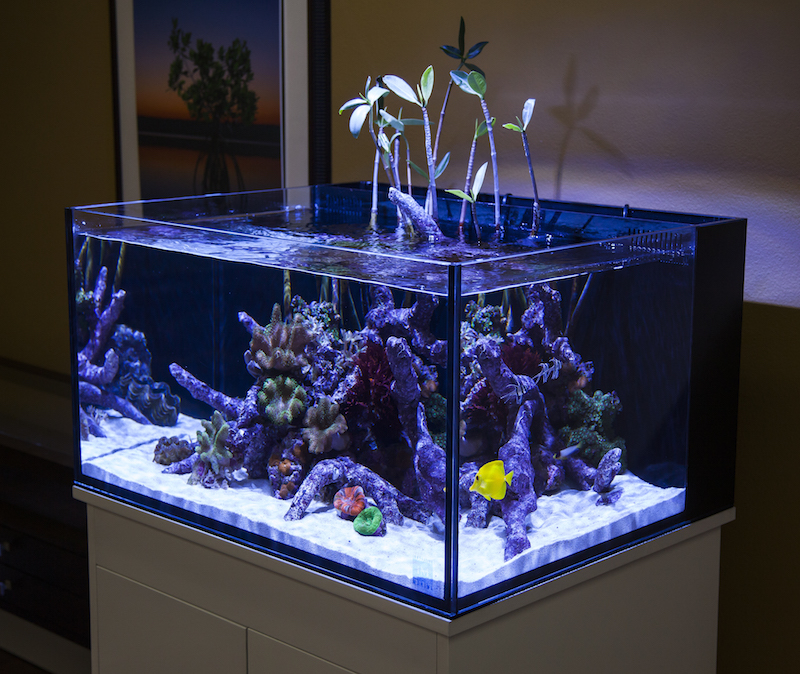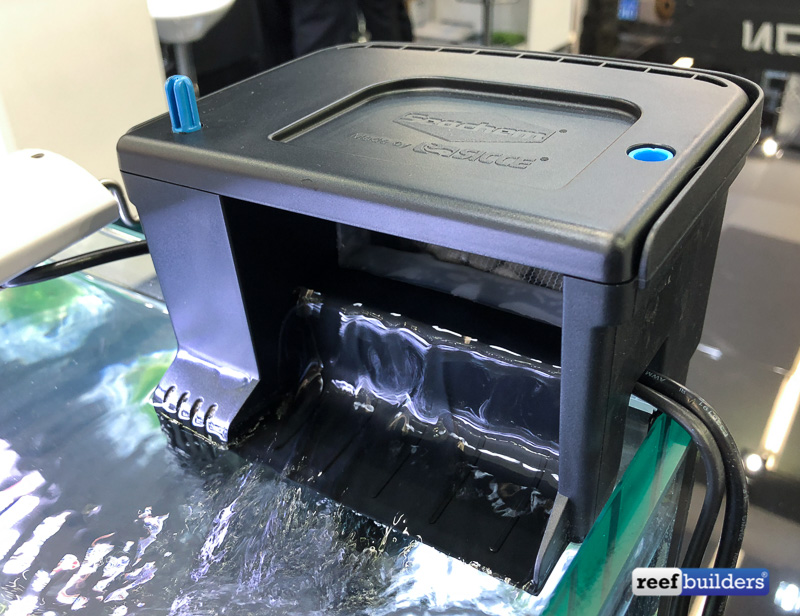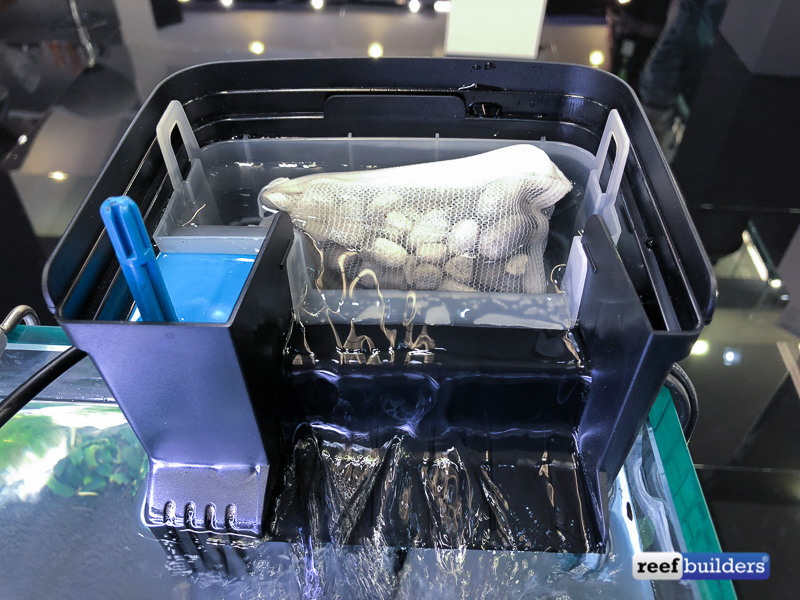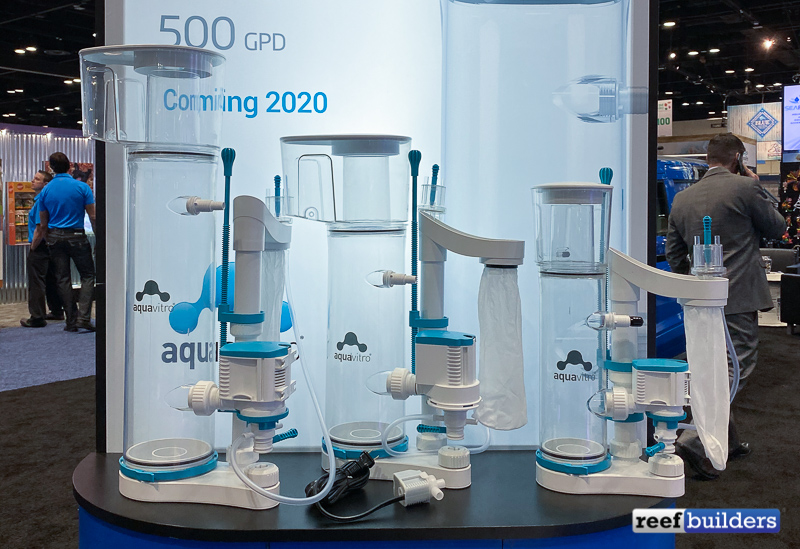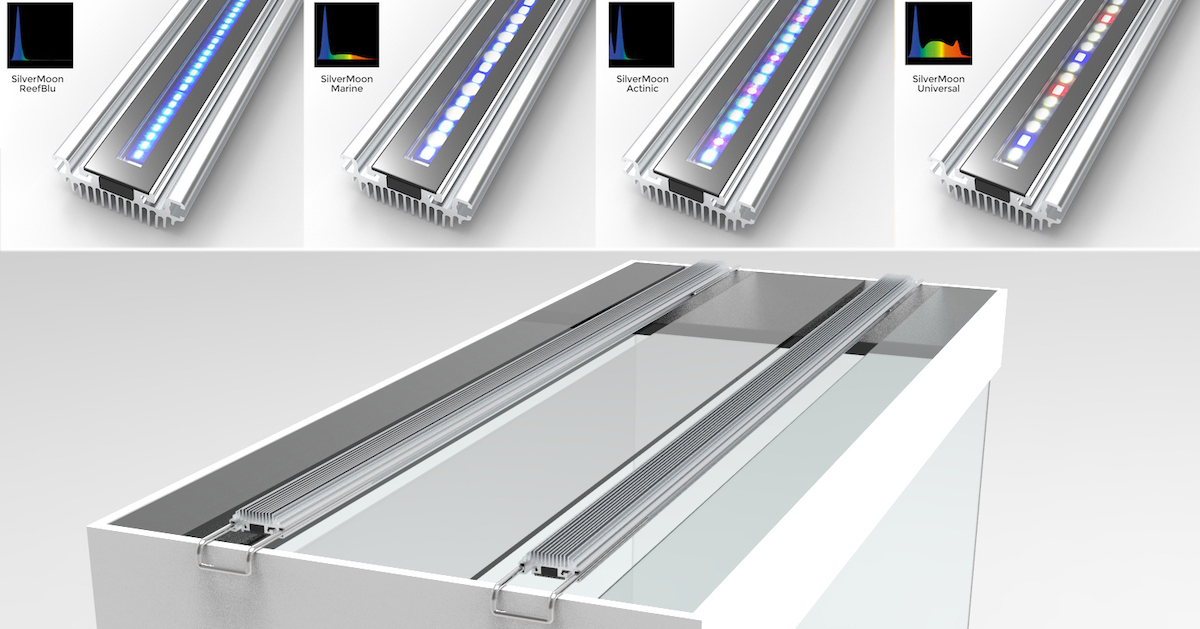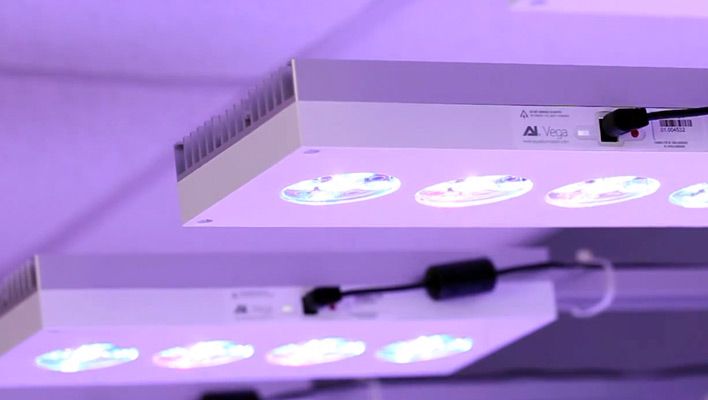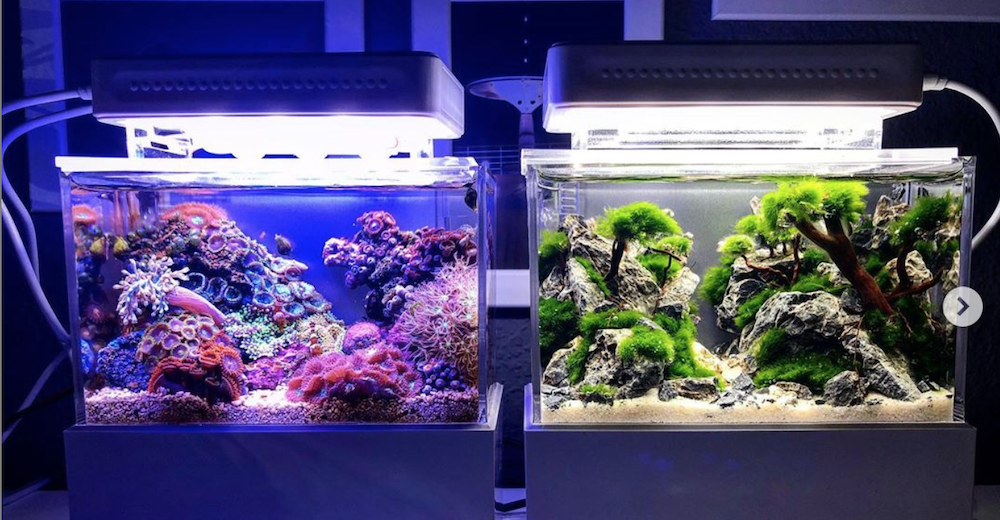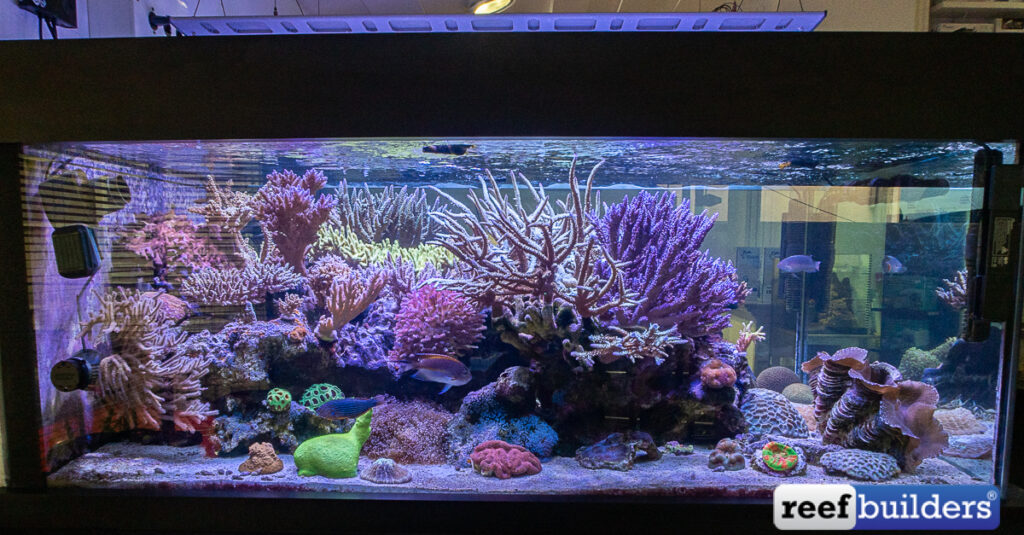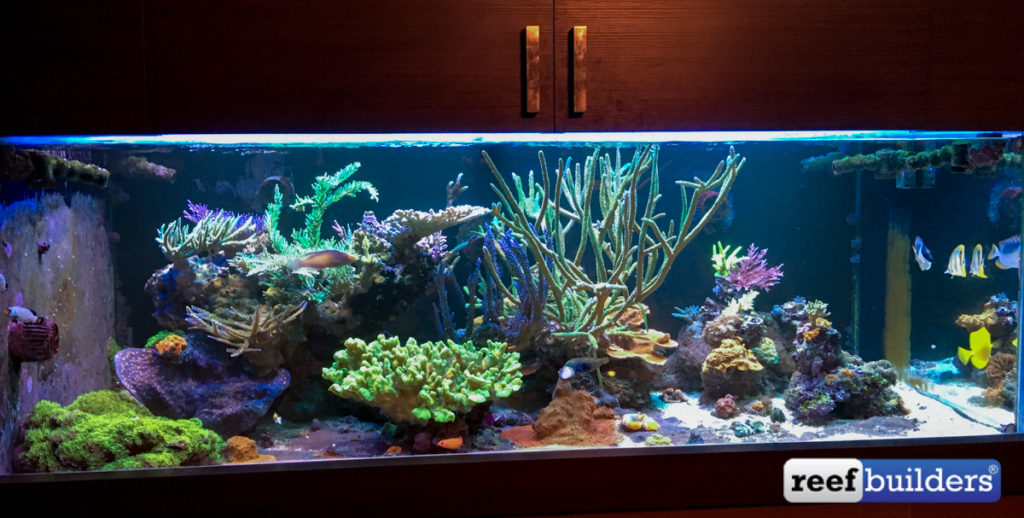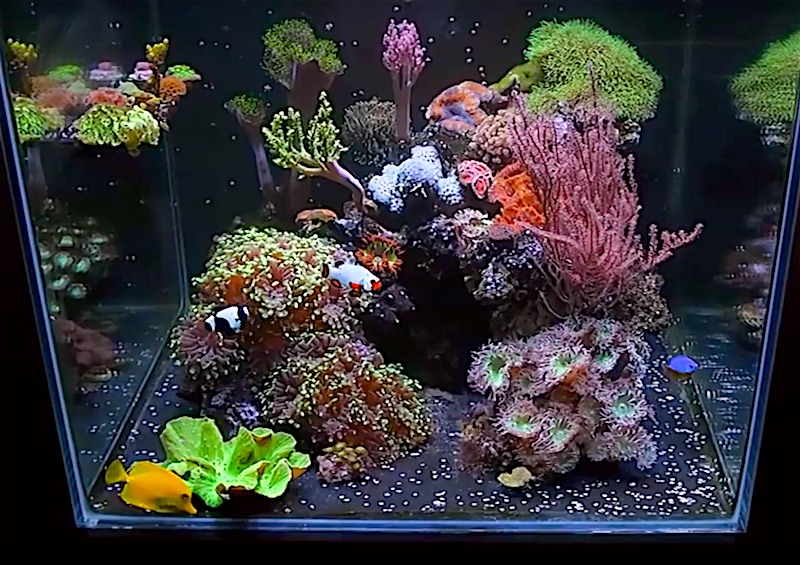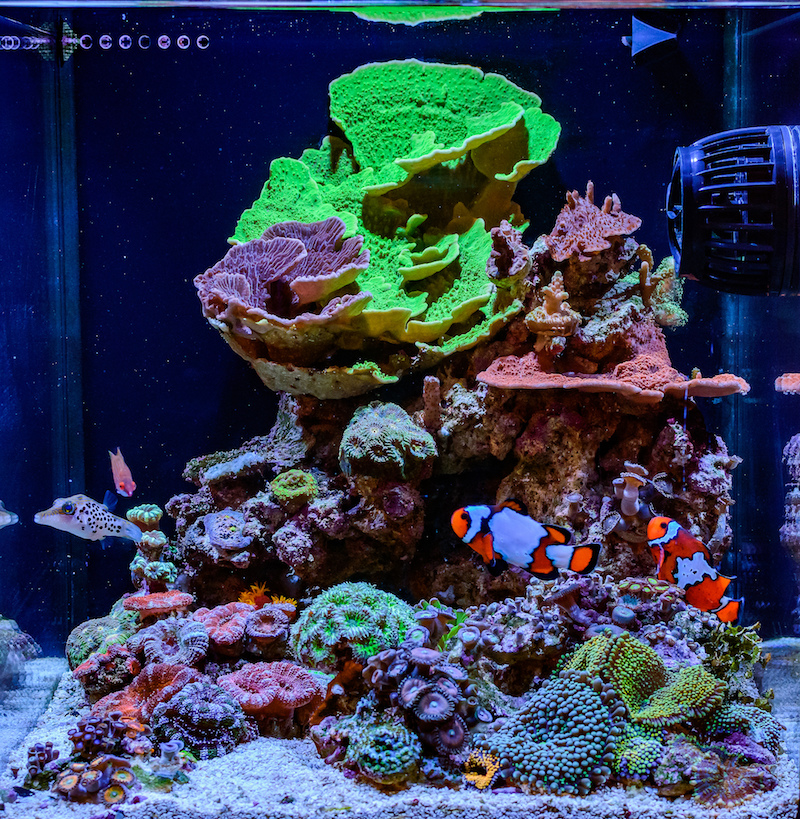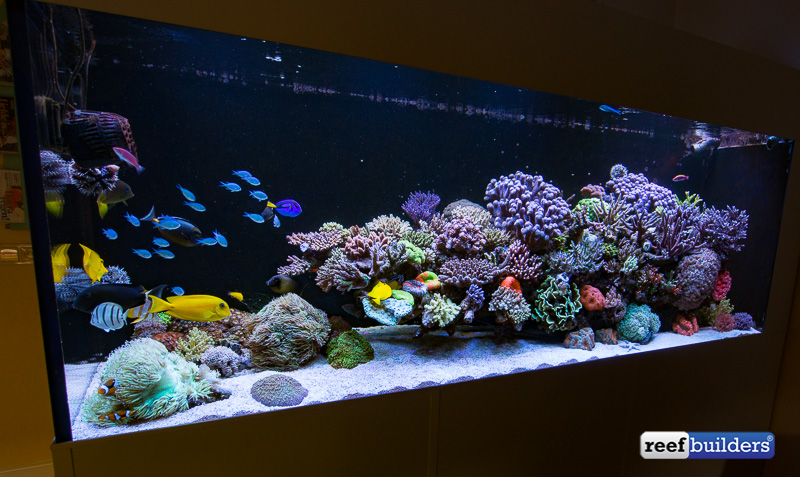Making the switch from freshwater to a saltwater aquarium is easier than you think. If you already have the skills to maintain a freshwater aquarium you only need to familiarize yourself with a few new techniques, additives, and saltwater aquarium gear to be successful.
Crossover Aquarium Skills
Much of what you already know stays the same. The cycling process to start the aquarium is just as important to saltwater hobbyists, but the principles of mechanical, biological, and chemical filtration are the same.
Regular water testing for ammonia, nitrite, nitrate, is the same, however, with saltwater aquariums, particularly if you desire to keep corals, you will also test for calcium, magnesium, and alkalinity. These elements are important for coral growth, especially for hard coral skeletons.
Therefore just like freshwater aquariums, regular water changes help keep saltwater aquariums healthy by removing excess phosphates and nitrates. The one new concept you have to learn is about preparing the saltwater itself.
Mixing Saltwater and Freshwater Top Offs
You will want to start with the purest water you can find for mixing up your batch of saltwater. aquavitro alpha™ is a concentrated conditioner for saltwater that removes chlorine, chloramine, and ammonia in the water.
It’s important to follow the instructions to mix the salt, this usually means getting your RO/DI or conditioned tap water down to 20c or 68F to start the mixing process. Simply add the amount of salt to your water (never the water to the salt), usually a little less than .5 cup per gallon.
It is best to use a power head pump such as Seachem’s Impulse Pumps in your water vat to mix up the salt, this can take between 30 minutes to an hour. Once the salt is mixed bring it up to temperature 25.5c or 78F before adding to the tank.
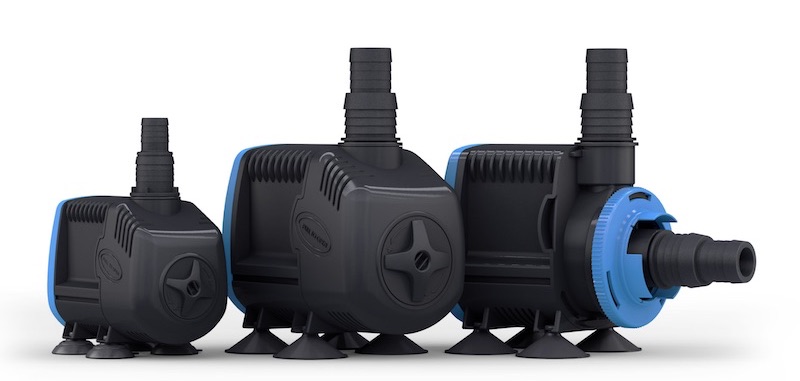
aquavitro salinity™ is a completely unique blend of salts formulated specifically for the reef aquarium that contains all essential major, minor, and trace components found in natural reef waters, but contains no toxic or non-essential components.
Before adding the premixed water to your tank it is important to measure salinity. You can test salinity with a hydrometer or a refractometer. You should have a specific gravity reading of 1.024-1.026 if you use a hydrometer or 35ppt with a refractometer.
Just like freshwater aquariums you will notice tank water does evaporate and will need to be topped up. Measure your salinity daily to make sure the number stays stable around 1.024-1.026. Top of the tank with fresh RO/DI water, not saltwater, as only the freshwater evaporates and the salt stayed in the water.
Decorating Your Tank With Live Rock and Coral
You don’t need to add any gravel or plastic decorations to a saltwater aquarium, instead choose a marine specific aragonite sand, and porous live rocks. The corals will become your decorations!
Live rocks are porous calcium carbonate or aragonite based rocks which host the beneficial bacteria in your tank. They are also the base for which you will attach your corals, and or anemones.
Purple and pink crustose coralline algae will cover the rocks. Other small organisms like works, and anemones can colonize the rocks and grow alongside corals. This is what makes the rocks “live rocks”.
Protein Skimmer, Reef Lights and Other Reef Aquarium Equipment
While the majority of aquarium equipment is the same for fresh and salt there is some new equipment you will need for keeping a saltwater aquarium. Most freshwater aquariums run with a canister filter and full spectrum LED light.
However, one essential piece of equipment for keeping saltwater aquariums you might not be familiar with is the protein skimmer. These devices mix air bubbles and water in a reaction chamber removing dissolved organic compounds before they have a chance to decompose and pollute aquarium water.
Protein skimmers like the aquavitro™ division skimmer help maintain healthy water quality and are an important piece of reef aquarium equipment. For smaller tanks or tanks with less fish you can also use a Seachem Tidal power filter, but as your livestock collection grows it’s time to upgrade to a skimmer.
Also you can run a saltwater aquarium with a canister filter but again as your aquarium becomes more advanced you will want to research getting a sump box below the aquarium to house your skimmer, as well as your mechanical and biological filtration.
Last but not least, to get the full viewing pleasure out of your saltwater aquarium, invest in a high quality LED reef light. These lights offer a more advanced blue spectrum which will highlight the fluorescent colors your coral produce.
Corals host a photosynthetic marine algae called zooxanthellae inside their tissue and need light to survive. If you want to have a happy healthy thriving coral population a good light will go a long way in ensuring your success.
Additives and Coral Health
In addition to proper lighting and water quality corals need a host of elements to ensure they can grow. Corals grow by absorbing calcium carbonate compounds in the water column and producing new calcium skeleton.
It is important to test for these elements and other trace element in your saltwater aquarium to ensure corals have all the nutrient they need to grow. Too much of one element, such as phosphate, can actually inhibit the uptake of calcium into corals and slow down their growth. Too much phosphate can also lead to nuisance algae.

Additives like Aquavitro calcification™ is a unique and concentrated blend of ionic and bioavailable gluconate-complexed calcium designed to restore and maintain calcium to levels found in natural seawater, without affecting pH.
A product like Aquavitro eight.four™ will be ideal to ensure that the tanks pH and alkalinity are stable. It contains a concentrated, balanced blend of bicarbonate and carbonate salts designed to stabilize pH and increase carbonate alkalinity.
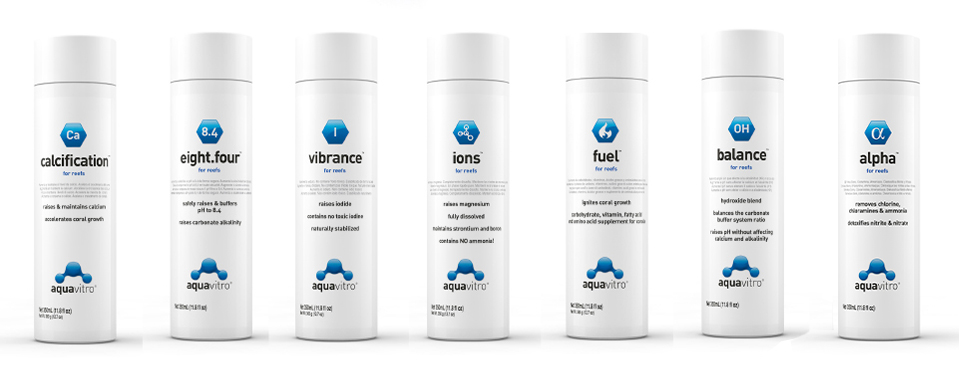
Once calcium and alkalinity levels are in check you can use Aquavitro fuel™ to address nutritional requirements of corals. Aquavitro fuel is a comprehensive carbohydrate, vitamin, amino acid, polyunsaturated fatty acid, and trace element supplement developed specifically for corals.
To address magnesium deficiencies in you saltwater aquarium use Aquavitro Ions™. This additive restores magnesium by employing the most concentrated (90,000 mg/L), fully dissolved magnesium and does so without adding any ammonia.
Ocean Biodiversity
The ocean is full of interesting creatures and offers freshwater aquarist the opportunity to welcome new creatures into their home. The basic principal of aquariums stay the same: healthy water quality equals healthy fish and corals.
But with all the options out there for livestock it is important to do your research and know what you are adding to your little ocean ecosystem. Make sure any new fish or coral is compatible with the livestock you already have in your tank.
Some corals are aggressive and can sting neighboring corals, and just like fish, corals have different habitat preferences which can be addressed by changing power head speed and positioning, and placing the corals closer or further away from the light.
Once you know how to successfully keep a freshwater aquarium you are well on your way to becoming a saltwater hobbyist. With a couple of new pieces of reef aquarium equipment and the right mix of essential elements and coral nutrition, you will have a thriving reef in no time.



